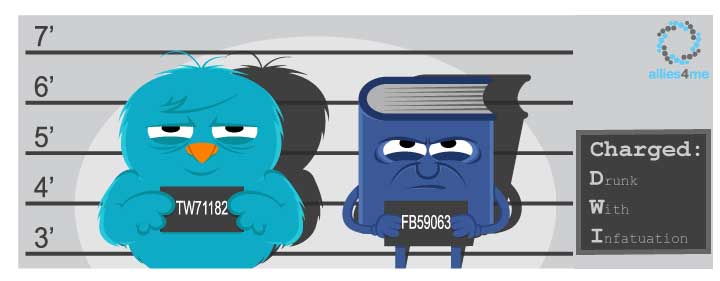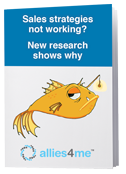 You’ve heard social media success stories and want to tap into that channel. But you still have questions about how to do it and about the return on investment of social media. You are not alone. Derek Thompson, a writer for The Atlantic, gets measured by the number of people who read his articles on TheAtlantic.com. Derek admits he is addicted to Twitter, but something caused him to pause and measure the effectiveness of Twitter against his core metric – page views. What he found: with over 150,000 impressions on Twitter, only 1% actually clicked to read the article. Disappointment followed.
You’ve heard social media success stories and want to tap into that channel. But you still have questions about how to do it and about the return on investment of social media. You are not alone. Derek Thompson, a writer for The Atlantic, gets measured by the number of people who read his articles on TheAtlantic.com. Derek admits he is addicted to Twitter, but something caused him to pause and measure the effectiveness of Twitter against his core metric – page views. What he found: with over 150,000 impressions on Twitter, only 1% actually clicked to read the article. Disappointment followed.
British musician Ed Sheeran has 16 million Twitter followers and 5.5 million Instagram followers. In December, he announced that he is going on hiatus from his social media accounts. Like many in the music industry, Ed has worked at a frenzied pace to build his following on social media, and now questions the effectiveness of it. The record labels, who track ROI, are unlikely to push back on Ed’s decision to bow out of social media. They know the truth.
“Marketers at labels will, off the record, tell you that “calls to action” (such as prompts to buy music or tickets) are a game of diminishing returns. Millions of followers do not mean millions of sales; they barely even mean thousands of sales.”
Two years ago we published two against-the-grain blog posts: A Sober Approach to Social Media and Facebook Isn’t the Answer. One of our clients was pushing us to develop a social media strategy, so we did a deeper investigation to figure out how to drive profitable engagement. After we presented our findings – the hard numbers as opposed to the hype – to the client, they decided to back away from social and focus on more profitable things. We face occasional blow-back for our lack of euphoria on all things social. That’s the price we pay for caring more about profit than popularity.
Birds of a feather
We do post regularly on social media. In fact, this story will be posted at least 12 times across different social media platforms. We encourage most people to promote their content on social media. But we also encourage people to measure performance so they know what works and doesn’t work.
We’ve found that most of our social engagement is with other digital marketers. We aren’t seeing customers engage. It is just birds of a feather who are also promoting their content on Twitter as well. Are you on Twitter? Are your customers on Twitter?
 New research shows that buyers and sellers are misaligned. Get the latest survey results from over 500 global companies.
New research shows that buyers and sellers are misaligned. Get the latest survey results from over 500 global companies.
Social is no longer free
In the early days of social media, it was considered a panacea – marketers figured out they could reach a massive audience for free. As time progressed, Facebook and other platforms evolved to a pay-to-play model. Less than 2% of an organization’s posts make it into the news feeds of “fans” (people who like your page). So, the only reliable way to get in front of your customers on social media is to run paid ads.
Know where your customers are
You wouldn’t open a deep sea fishing store in West Texas. Sure, you could sell a couple rods, but not enough to make it profitable. People generally don’t shop for deep sea tackle in the middle of the desert. This is different than saying there are no people in the desert who go deep sea fishing. Of course people living in the desert go deep sea fishing – it’s just not where they do their shopping.
It’s the same with social media. Yes, I hear social media success stories, and they always get my attention. I’d love to harness the power of those networks. Just last night I ran into an internet marketing leader that lives near me. He just returned from a conference and told me how Dennis Yu is getting unbelievable results on Facebook. “How? What’s his secret?” are the natural questions that follow a statement like that. As I listen, I learn that all of his data was for ads he ran for the Golden State Warriors. Ah! That makes sense.
You don’t sell deep sea fishing gear in the desert because the context is wrong. You sell deep sea tackle by the sea because the context is right. You sell social connection on social media because the context is right. People go to social media to connect with friends and community. Reconnecting with your alma matter connects you with your college memories and college community. It is a natural fit because the context is right.
In extreme contrast, I know a company running retargeting ads on Facebook. But their product is a surgical tool for prostate surgery to prevent erectile dysfunction. I’ve got a screen shot of their ad, but I fear my text is already too graphic. So, imagine an ad popping up in your Facebook feed. It has a color photograph of a prostate and it talks about sexual dysfunction. Ready to click? Of course not! You want to get rid of the ad as fast as possible and hope nobody saw it on your computer. We tried to persuade this company to reconsider their retargeting ads. They did not and they are not a client. We can’t help them.
Be smart and measure
“Feed what works and starve what doesn’t” is one of my favorite phrases. It is simple, yet clear. If social media works for your business, then feed it. If it doesn’t, then starve it. Whatever your choice, it should be backed by data. There are numerous reasons we like the Hubspot platform and chose to become Hubspot partners. One is we can measure all of our inbound marketing metrics, including social, in one place. If you aren’t measuring the ROI of social media, you should start today. Our Preparing for Recession article stresses the importance of fine-tuning your inbound marketing program in the face of the forthcoming recession. Measure all of your inbound marketing channels. Feed what works and starve what doesn’t.
 New research shows that buyers and sellers are misaligned. Get the latest survey results from over 500 global companies.
New research shows that buyers and sellers are misaligned. Get the latest survey results from over 500 global companies.